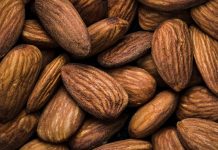
When it comes to managing high blood pressure, what you eat plays a crucial role.
Enter the Dietary Approaches to Stop Hypertension (DASH) diet, a lifestyle change that has shown promising results in helping individuals lower their blood pressure without the need for medication.
This diet isn’t just a list of do’s and don’ts but a holistic approach to eating that emphasizes heart-healthy foods. Let’s dive into the background of the DASH diet and explore the research that supports its effectiveness.
The DASH diet came into the spotlight in the early 1990s when researchers were searching for a dietary solution to hypertension, a condition that increases the risk for heart disease and stroke, among other health issues.
High blood pressure affects a significant portion of the population worldwide, making the search for effective, non-pharmaceutical treatments more crucial than ever.
The DASH diet’s primary goal is to reduce sodium intake while increasing foods rich in nutrients that help lower blood pressure, such as potassium, calcium, and magnesium.
One of the foundational studies that put the DASH diet on the map was conducted by the National Institutes of Health (NIH).
This study demonstrated that individuals who followed the DASH diet saw a significant reduction in their blood pressure in as little as two weeks.
What’s remarkable about these findings is that the diet worked for people with and without hypertension, showcasing its potential as a preventive measure as well as a treatment method.
So, what does following the DASH diet entail? At its core, the diet encourages the consumption of vegetables, fruits, whole grains, lean protein sources (such as fish, poultry, and beans), nuts, and seeds. It also recommends low-fat dairy products to add to the intake of essential nutrients.
On the flip side, the DASH diet advises limiting foods high in saturated fats (like fatty meats and full-fat dairy products), tropical oils, sugary beverages, and sweets. Processed foods, which are often high in sodium, are also on the “eat less” list.
What sets the DASH diet apart from other dietary plans is its flexibility. It doesn’t prescribe specific meals but rather suggests daily and weekly nutritional goals.
This approach makes it adaptable to different tastes, lifestyles, and nutritional needs, making it easier for people to stick with it long-term.
Further research has reinforced the benefits of the DASH diet. Studies have found that it not only lowers blood pressure but also reduces the risk of developing other chronic diseases such as heart disease, stroke, and diabetes.
Some research suggests that when combined with a low sodium intake, the DASH diet can be as effective as some blood pressure medications.
Despite its proven benefits, adopting the DASH diet requires a commitment to making long-term dietary changes. It might be challenging at first, especially for those used to a diet high in processed foods and sodium.
However, the benefits of lower blood pressure and improved overall health make it a worthwhile endeavor.
In conclusion, the DASH diet stands out as a scientifically backed, effective, and flexible approach to lowering blood pressure and promoting heart health.
Its emphasis on whole foods and nutrients critical for blood pressure management makes it a powerful tool in the fight against hypertension.
Whether you’re looking to prevent high blood pressure or manage it, the DASH diet offers a practical, food-based solution to improving your health and well-being.
Follow us on Twitter for more articles about this topic.
Copyright © 2024 Scientific Diet. All rights reserved.








